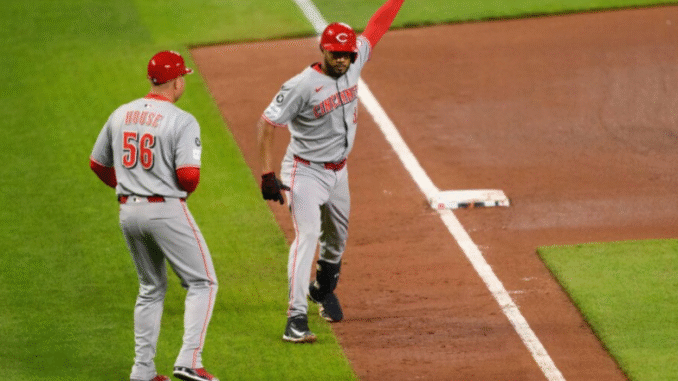
The Milwaukee Brewers are currently navigating a competitive National League Central race, and any roster move at this point must be a carefully calculated step toward solidifying their playoff aspirations. While it’s tempting to scour the waiver wire for potential bargains, not every recently DFA’d (designated for assignment) player is a hidden gem. One name that’s surfaced is the Cincinnati Reds’ recently DFA’d third baseman — once a promising bat and serviceable glove — but now a player the Brewers should approach with significant caution.
The most pressing red flag surrounding this third baseman is his steep offensive decline. Once regarded as a reliable middle-of-the-order presence, his bat has cooled dramatically over the last few seasons. His slugging percentage and on-base numbers have taken a nosedive, with increasing strikeout rates and an inability to handle velocity or breaking pitches with any consistency.
In a Brewers lineup already prone to streaky offense, adding another inconsistent bat — especially one trending in the wrong direction — could compound rather than alleviate Milwaukee’s offensive challenges. The team needs production from its corner infielders, not reclamation projects who might only add to their woes
Defense, once an area of strength for the player in question, has also regressed. Advanced metrics show diminishing range and a higher error rate, making him a liability at the hot corner. The Brewers have leaned on solid defensive play to stay competitive, especially with their strong pitching staff that benefits from clean fielding. Bringing in a third baseman who can’t be trusted with routine plays would put unnecessary strain on an otherwise efficient defensive unit.
Milwaukee already has several internal candidates capable of manning third base, including players with higher ceilings or developmental upside. Investing reps in homegrown talent or seeking a more well-rounded trade option near the deadline would be a better use of roster space and financial flexibility.
Moreover, as the trade market develops closer to the deadline, higher-upside players with team control or better all-around tools will likely become available. Committing to a recently DFA’d player now could mean missing out on a more impactful move later.
Clubhouse dynamics and organizational culture matter. A player coming off a DFA — especially one due to performance and attitude concerns (if any exist) — needs to fit seamlessly into a team with postseason goals. Milwaukee has a young, resilient, and unified roster. Any new addition must enhance that chemistry, not disrupt it. The Brewers can’t afford a veteran who might carry frustration or a poor mentality into the clubhouse.
While taking a flier on a DFA’d player sometimes pays off, the Brewers must resist the urge to chase nostalgia or former potential. The recently DFA’d Reds third baseman is not the answer to their needs at this pivotal point in the season. With an eye on October, Milwaukee should be aiming higher — toward players who can elevate the roster immediately and sustainably.
In short, this is a case where the past shouldn’t dictate the present. The Brewers should think twice — and probably pass.

Leave a Reply